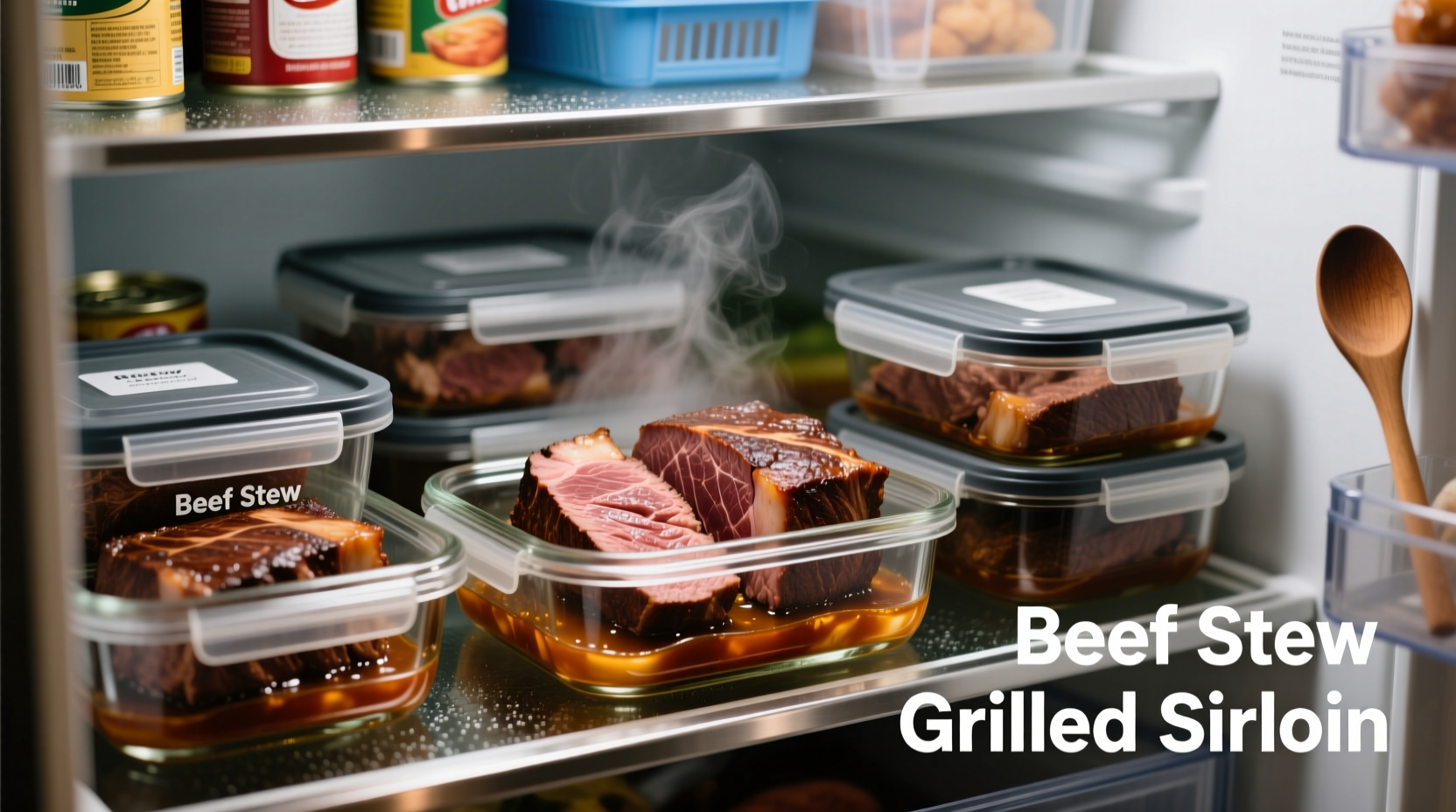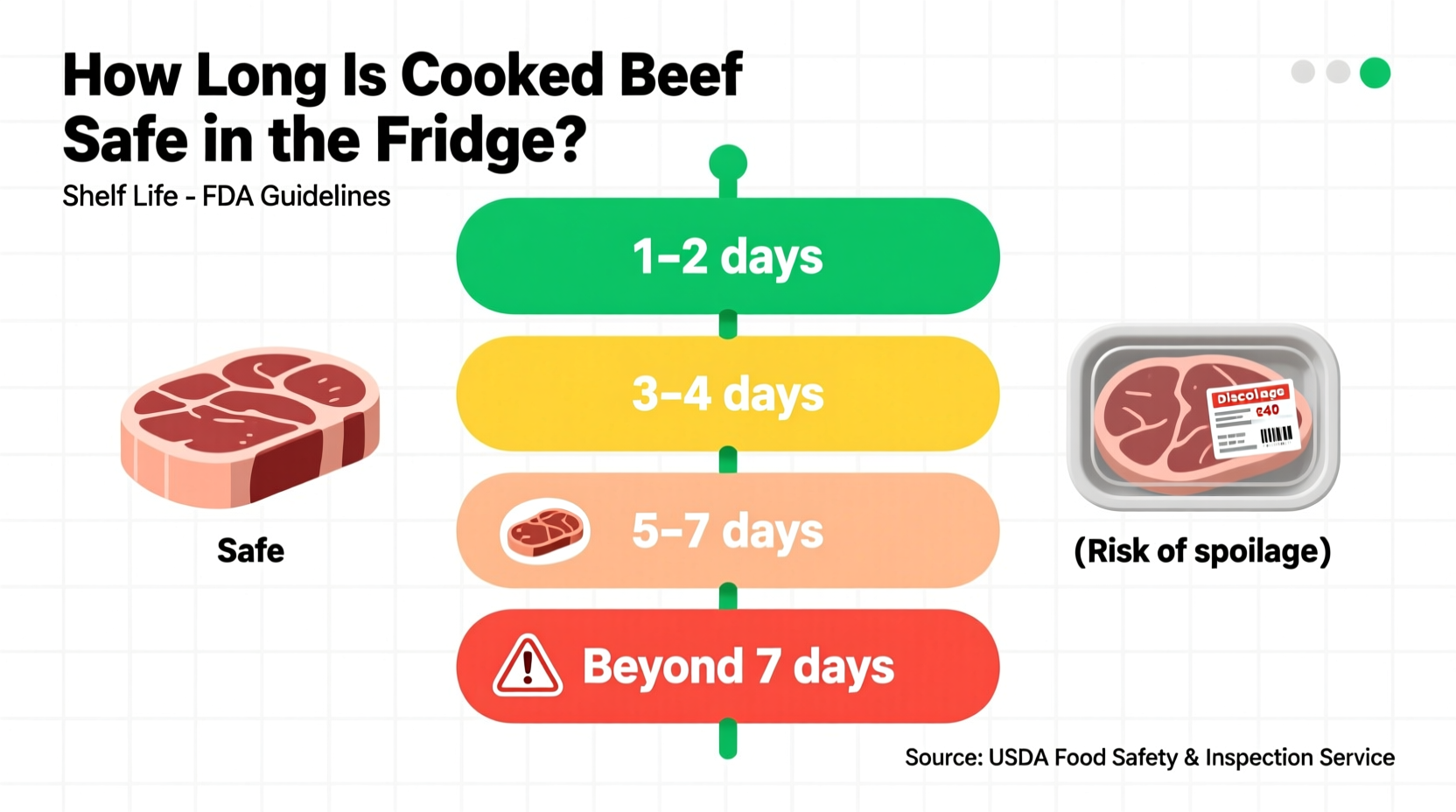The Science Behind Cooked Beef Shelf Life
Understanding why cooked beef has a limited refrigerator lifespan starts with bacterial growth patterns. When cooked meat cools to temperatures between 40°F and 140°F (the "danger zone"), bacteria multiply rapidly. The USDA Food Safety and Inspection Service confirms that pathogens double every 20 minutes in this temperature range.
While cooking destroys most harmful bacteria initially, cooked beef becomes vulnerable to new contamination during handling and storage. Unlike raw meat which has natural protective barriers, cooked meat's structure breaks down during preparation, creating ideal conditions for bacterial growth.

Maximizing Your Cooked Beef's Freshness
Follow these professional storage techniques to ensure your cooked beef stays safe throughout its recommended shelf life:
Proper Cooling Before Refrigeration
Never place hot cooked beef directly in the refrigerator. Rapid cooling within 2 hours of cooking prevents condensation that accelerates spoilage. Use these methods:
- Slice large cuts into smaller portions for faster cooling
- Place containers in an ice bath while stirring occasionally
- Use shallow containers no deeper than 2 inches
Optimal Storage Containers and Placement
The container you choose significantly impacts shelf life. Consider these factors:
| Container Type | Effectiveness | Best For |
|---|---|---|
| Airtight glass containers | Excellent (4 days) | Long-term storage, meal prep |
| Plastic containers with tight seals | Very Good (3-4 days) | Everyday leftovers |
| Aluminum foil wrapping | Fair (2-3 days) | Short-term storage only |
| Plastic wrap directly on surface | Poor (1-2 days) | Avoid for cooked beef |
Store cooked beef on middle refrigerator shelves rather than the door, where temperature fluctuations occur most frequently. Maintain your refrigerator at 35-38°F (1.7-3.3°C) for optimal food safety.
Recognizing When Cooked Beef Has Spoiled
Don't rely solely on the calendar - your senses provide critical safety information. Watch for these spoilage indicators:
Visual Clues of Spoilage
- Grayish or greenish discoloration beyond normal browning
- Visible mold growth (fuzzy spots of white, green, or black)
- Unusual slimy film on the surface
Sensory Warning Signs
Trust your nose and texture assessment:
- Sour, ammonia-like, or "off" odor (different from normal meat aroma)
- Slippery or sticky texture when touched
- Unusual taste (though never taste to check safety)
The USDA emphasizes that when in doubt, throw it out. Consuming spoiled cooked beef can cause food poisoning with symptoms appearing 6-24 hours after consumption.
Special Considerations for Different Beef Preparations
Not all cooked beef follows the standard 3-4 day rule. These variations affect shelf life:
Ground Beef vs. Whole Cuts
Ground beef has a shorter refrigerator life (1-2 days) compared to whole cuts (3-4 days) because the grinding process distributes surface bacteria throughout the meat. This increased surface area allows faster bacterial growth.
Beef in Sauces and Gravies
Cooked beef in acidic sauces (tomato-based) may last the full 4 days, while beef in dairy-based sauces should be consumed within 2-3 days. The FDA Food Code notes that mixed dishes with multiple ingredients often have shorter shelf lives than single-ingredient leftovers.
Meal-Prepped Portions
Individually portioned cooked beef maintains freshness longer than bulk storage. When stored properly in airtight containers, meal-prepped portions can reach the 4-day maximum while bulk containers may degrade faster due to repeated exposure to air during serving.
Extending Beyond the Refrigerator: Freezing Cooked Beef
When you can't consume cooked beef within 3-4 days, freezing preserves quality and safety:
- Properly frozen cooked beef remains safe indefinitely but maintains best quality for 2-3 months
- Vacuum sealing extends freezer life to 6 months
- Always label containers with contents and freezing date
- Thaw frozen cooked beef in the refrigerator, not at room temperature
The National Center for Home Food Preservation confirms that freezing stops bacterial growth completely, making it the most reliable method for long-term cooked beef storage.
Food Safety Timeline: What Happens Each Day
Understanding the progression of bacterial growth helps explain why the 3-4 day window exists:
| Day | Bacterial Activity | Recommended Action |
|---|---|---|
| Day 1 | Minimal bacterial growth | Safe to eat; peak freshness and flavor |
| Day 2 | Moderate bacterial increase | Still safe; check for early spoilage signs |
| Day 3 | Significant bacterial multiplication | Consume today or freeze; inspect carefully |
| Day 4 | Near-dangerous levels | Last safe day; discard if any doubt |
| Day 5+ | Potentially hazardous levels | Always discard; high food poisoning risk |
This timeline assumes proper storage at or below 40°F (4°C). Higher temperatures accelerate bacterial growth significantly. The USDA Food Safety and Inspection Service reports that at 50°F, bacteria can reach dangerous levels in just 2 days.











 浙公网安备
33010002000092号
浙公网安备
33010002000092号 浙B2-20120091-4
浙B2-20120091-4